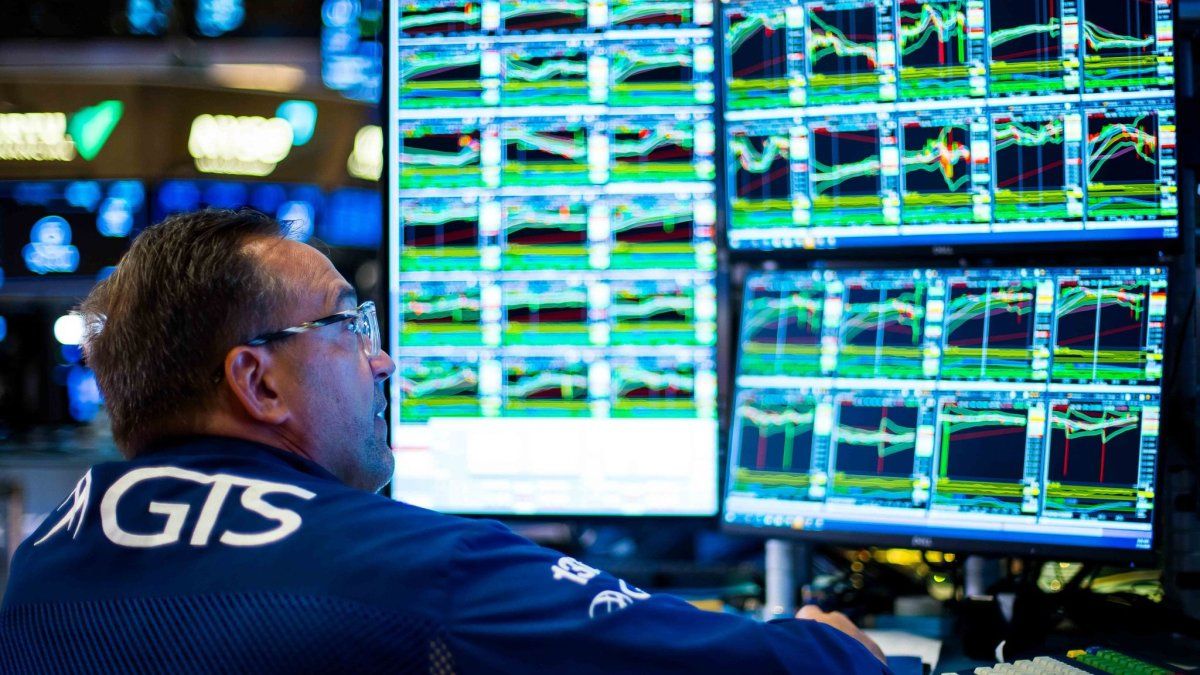On Friday, Dow confirmed that it was in a correction, that is, more than 10% less than its December record closure, while Nasdaq entered a bearish market.
Monday morning, The S&P 500 had fallen 20% below its historical closing maximum. The index experienced a brief rebound, after a news said Trump was considering a 90 -day pause in tariffs. White House officials quickly denied the report, sending the market back to red numbers.
No one from Black Monday was saved
The reference rates opened with a strong decline on Monday, continuing the sales wave observed at the end of last week, which caused a drop in the S&P 500 index of more than 10%, losing almost US $ 5 billion in market value and marking its most significant decrease in two days since March 2020, the beginning of the Covid-19 Pandemic.
President Trump declared Sunday that his New tariffs are the only way to solve the important commercial deficits with China and the European Union. He said that these will remain and that investors must assume the consequences, also emphasized that it will refrain from negotiating with China until the United States trade deficit is addressed.
Last week the president announced the implementation of a universal tariff to imports of 10%, which entered into force on April 5, with higher additional tariffs for the main commercial partners, such as China, Vietnam, Japan and the European Union, which will enter into force on April 9.
Beyond China that already responded to US tariffs, the European Union also seeks unity among its member states to formulate a coordinated response, which could lead to additional retaliation measures.
Wall Street “Fear Index”
Investors show signs of extreme nervousness, with the CBOE Volatility Index (VIX), the most popular indicator of the feeling of the market, exceeding 60 intradic points, its highest level since August 2024. The index moderated part of that progress, but still quotes around 50 points.
The VIX futures curve invested sharply, indicating a Intense market voltage in the short term and an increase in the demand for coverage also in the short term. The differential between contracts for a month and eight months was extended to levels not seen from the high point of the Covid-19 crisis in 2020, according to Bloomberg data.
The markets are already discounting five Fed type cuts until 2025, while investors prepare for a deeper economic crisis. The yields of the treasure bonds have fallen dramatically, with an increasing demand due to the expectations of a growth slowdown.
The shareholding has no peace
MEGA CAPITALIZATION ACTIONS EXCEPT Nvidia (+3.11%) and Amazon (+1.8%) The rest descended supporting most sales.
Apple (-4.6%) and Tesla (-3.9%) dropped, while Caterpillar (-3.8%), An important seller of construction equipment worldwide also fell.
On the other hand, several actions of the automotive industry, such as Stellantis (-5.8%) Ford (-3.8%) and General Motors (-2%), They aggravated recent losses after Bernstein published a bassist vision on the actions of the automotive industry, lowering the rating of the latter to “Low performance” from “market performance”.
The greatest increases and casualties of the wheel
Among the actions that were most appreciated appear, RHTTHM (+17.1%), US Steel (+15.2%), Tonix (+14.3%), Rh (+12.8%) and Oklo (+11.8%).
While the most resigned value found, Samsonite (-19.2%), Hutchmed 15.5 (-%), Lenovo (-14.5%), Xianomi 13.9 (-%) and Luckin Coffee (-12%).
S&P500 and a possible scenario (dismal)
JPMorgan reduced his basic goal for S&P 500 to 5,200 points for the end of the year And he presented a new 4,000 -point bearish scenario, citing the growing recession risks and the impact of the wide tariffs of US President Donald Trump.
“The S&P 500 quoted below the anterior drop target of JPMorgan of 5200 on Friday, while the future fell another 120 points in the session prior to Monday, marking one of the most pronounced falls in the market in three days of history.”
“Given the speed of market collapse, generalized panic and disinversion in variable income positioning, the probabilities of tactical contraction are high, especially if there are positive holders,” They wrote the strategists led by Dubravko Lakos-Bujas.
JPMorgan now foresees a recession in the US if the current tariff structure is maintained. His economic team projects an annual PBI contraction of 0.3 % in 2025 and an increase in 5.3 % unemployment.
The Wall Street institution provides that the impact of “Liberation Day” (the Trump announcement of universal and reciprocal tariffs) Increase the average effective tariff rate from 3% to 19%, which is equivalent to a tax increase of 2.4% of GDP, the largest since 1968.
In this sense, JPMorgan describes three scenarios For the S&P 500: Batter scenario: 4,000, assuming that there is no tariff relief; Base 5.200 scenario, with partial relief and upward scenario: 5,800.
Lakos-Bujas warns that gains sales could simulate a typical recession, with a future forecast vulnerable to a greater fall.
“This macroeconomic shock could result in a recession this year, with the Fed responding with five cuts for January 2026”, They indicated, adding that much of the tariff obligation of 600,000 million dollars will surely be absorbed by companies, which will affect margins and demand.
JPMorgan also pointed out that Investor’s confidence deteriorated drasticallywith an increase in volatility, a collapse of impulse factors and signs of a generalized risk reduction in stock markets.
Source: Ambito
I am a 24-year-old writer and journalist who has been working in the news industry for the past two years. I write primarily about market news, so if you’re looking for insights into what’s going on in the stock market or economic indicators, you’ve come to the right place. I also dabble in writing articles on lifestyle trends and pop culture news.




